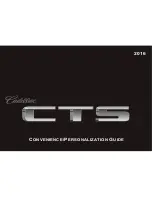
In this case, always ensure that the co-driver's
airbag is disabled. The PASSENGER AIRBAG
OFF indicator lamp must light up.
If the PASSENGER AIR BAG OFF indicator lamp
remains off and/or the PASSENGER AIR BAG
ON indicator light is lit, do not fit a rearward-
facing child restraint system on the co-driver's
seat. Further information can be obtained under
"Problems with the automatic co-driver's front
airbag deactivation system" (
Y
page 52).
G
WARNING
If you secure a child in a forward-facing child
restraint system on the front-passenger seat
and you position the front-passenger seat too
close to the dashboard, in the event of an
accident, the child could:
R
come into contact with the vehicle's inte-
rior if the PASSENGER AIR BAG OFF indi-
cator lamp is lit, for example
R
be struck by the airbag if the PASSENGER
AIR BAG ON indicator lamp is lit
This poses an increased risk of injury or even
fatal injury.
Always move the front-passenger seat as far
back as possible and fully retract the seat
cushion length. Always make sure that the
shoulder belt strap is correctly routed from
the vehicle belt outlet to the shoulder belt
guide on the child restraint system. The shoul-
der belt strap must be routed forwards and
downwards from the vehicle belt outlet. If
necessary, adjust the vehicle belt outlet and
the front-passenger seat accordingly. Always
observe the information about suitable posi-
tioning of the child restraint system in this
Owner's Manual as well as the child restraint
system manufacturer's installation instruc-
tions.
If the automatic co-driver's front airbag deacti-
vation system detects that:
R
the co-driver's seat is unoccupied, the
PASSENGER AIR BAG OFF indicator lamp
lights up after the system self-test and
remains lit. This indicates that the co-driver's
front airbag is disabled.
R
the co-driver's seat is occupied by a child in a
rearward-facing child restraint system, the
PASSENGER AIR BAG OFF indicator lamp
lights up after the system self-test and
remains lit. This indicates that the co-driver's
front airbag is disabled.
But in the case of a child in a rearward-facing
child restraint system, the PASSENGER AIR
BAG ON indicator lamp can be lit continuously
after the system self-test. This indicates that
the co-driver's front airbag is enabled. The
result of the classification is dependent on,
among other factors, the child restraint sys-
tem and the child's stature. It is recommen-
ded that you fit the child restraint system to a
suitable rear seat.
R
the co-driver's seat is occupied by a child in a
forward-facing child restraint system, either
the PASSENGER AIR BAG ON or PASSENGER
AIR BAG OFF indicator lamp lights up after the
system self-test depending on the result of
the classification and remains lit. The result of
the classification is dependent on, among
other factors, the child restraint system and
the child's stature.
Move the co-driver's seat as far back as pos-
sible. Always observe the information on
"Child restraint systems on the co-driver's
seat" (
Y
page 59) and on "Suitable posi-
tioning of the child restraint system"
(
Y
page 60). Alternatively, fit the child
restraint system on a suitable rear seat.
R
the co-driver's seat is occupied by a person of
smaller stature (e.g. a teenager or small
adult), either the PASSENGER AIR BAG ON or
the PASSENGER AIR BAG OFF indicator lamp
lights up and remains lit after the system self-
test depending on the result of the classifica-
tion.
-
If the PASSENGER AIR BAG ON indicator
lamp is lit, move the co-driver's seat as far
back as possible. Alternatively, a person of
smaller stature can sit on a rear seat.
-
If the PASSENGER AIR BAG OFF indicator
lamp is lit, a person of smaller stature
should not use the co-driver's seat.
R
the co-driver's seat is occupied by an adult or
a person of a stature corresponding to that of
an adult, the PASSENGER AIR BAG ON indi-
cator lamp is lit continuously after the system
self-test. This indicates that the co-driver's
front airbag is enabled.
Occupant safety
49
Safety
Z
















































